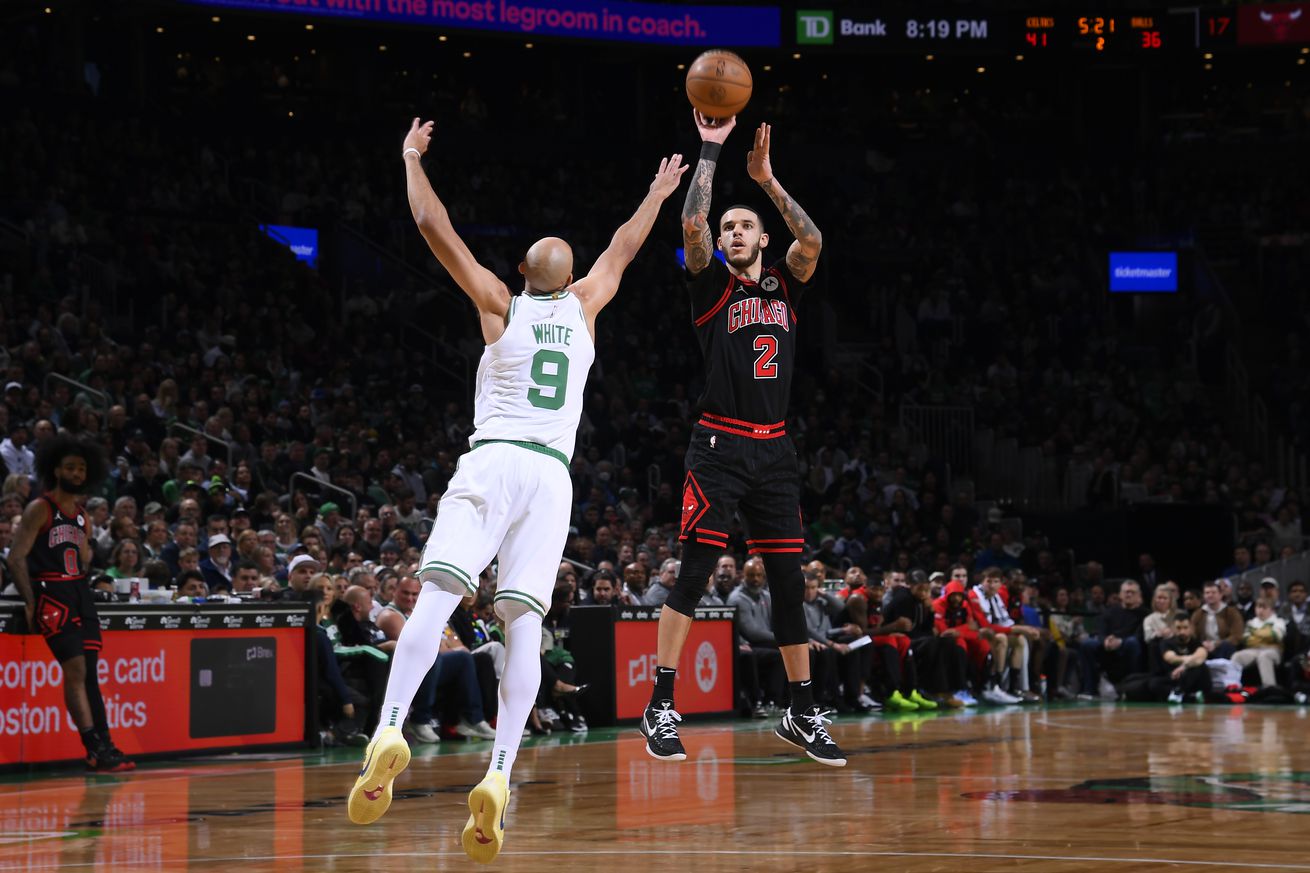
Some opponents tried to challenge the Celtics’ three-point volume advantage, and the Bulls successfully used it against them between Thursday’s win and a close call last month.
Nobody received more questions about the Celtics’ threes than Joe Mazzulla over the past three seasons. Whether skepticism over the amount Boston attempted or praise for the role they played in the 2024 championship, or more recently, complaints for the impact they had on the aesthetic of the game, Mazzulla would occasionally shift the conversation to the way the Celtics defended threes.
Stopping opponents from taking and making threes exacerbated the advantage that three-point volume created for the Celtics to begin this season. Last year, only three teams held opponents to a lower percentage than Boston’s 35.2% defensive mark. Into the playoffs, the Celtics limited their opponents to 32.7 attempts each night while trying 40.2 themselves.
That trend continued to begin this year, as the Celtics employed an aggressive approach to taking away the three without Kristaps Porzingis. As Jalen Brunson predicted before opening night, three-pointers rose to begin the season, but Boston allowed the fourth-fewest attempts of any team. The result: layup after layup, as Jaylen Brown described it.
“The game is analytically driven,” Mazzulla said before the opener. “So people are gonna follow the analytics. Fortunately for us, we have the analytics, but we have the guys to be able to do that … It just comes down to how do you control, dominate and win the shot margin? … Can you find different ways to generate the highest possible shot quality on every single possession, and then defensively, can you take away and force the lowest possible shot quality on each possession?”
That led to several adjustments, both personnel-based and dictated to specific opponents that tried to spread the Celtics out, speed the game up and match their three-point volume. Some, Mazzulla observed as early as last season, rolled the dice on fluctuations in three-point percentages to try to steal a game. Earlier this month, Memphis’ defense employed another Celtics tactic by playing away from Jrue Holiday and funneling three-point attempts toward him to alter Boston’s shot profile.
When Porzingis returned, the Celtics adjusted to heavy drop coverage, eventually rose from the bottom-10 to first in rim protection, and while they mostly limited three-point attempts too, their opponents hit them at a 38% rate. Since, they’re selling out less to take the three away, a dangerous game against the Bulls, who have shot the second-most threes in the league behind Boston each night. They nearly beat the Celtics last month, too, by hitting 39.2% of their 51 three-point attempts. On Thursday, they finished 19-of-52 (36.5%).
“Some of those came off offensive rebounds,” Mazzulla said after. “The ones we have to take away are the ones that came off offensive rebounds and the ones that came late in the clock. Whether it’s an inch out read or we have good individual defense and they make one more pass … there are 10-12 (threes) that you have to fight to take away.”
Recently, more opponents have matched the Celtics’ rate, an advantage they’ve used most nights to become unbeatable. Washington worked within 46-40 in attempts on Sunday before the Bulls took more than Boston into the late stages of their win on Thursday. That led to segments where the Celtics clearly tried to force their own attempts to counteract Chicago’s. They won, 56-52, in volume, but only converted 25% to lose the game.
Mazzulla, who defended the quality of those attempts, admitted alongside Porzingis that those misses likely led to defensive slippage late in the game and frustration that boiled over with the officials. Since Porzingis came back, now 10 games ago, the Celtics are allowing 37.8 three-point tries each game (14th), closer in line to how they defended one year ago, while they’ve lowered opponent’s percentages to 36.2% (16th) over that stretch — in line with Thursday’s loss.
The Celtics have questions about who they want to be offensively. In line with a league-wide trend, they’re taking more threes than last year and hitting a lower percentage. It’s leading to a powerful advantage over most teams, but some have become successful at matching them from deep. And if Boston can’t control the shots they give up, then there’s more potential for small movements in percentages overpowering them on the wrong night.
“Our coaching staff instilled in everyone, especially coach (Billy) Donovan, just instilled in everyone confidence to shoot it,” Coby White said earlier this season. “If we’d watch film during training camp of our practice, if somebody didn’t shoot it or somebody passed up a shot, he was stopping it and demanding they shoot the ball.”